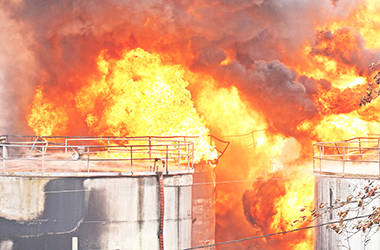
Are we doing enough in the process industry to prevent the next major accident?
Mike Edwards
Features ABB
High Reliability Organizations (HRO’s), such as air traffic control, are said to exhibit a ‘chronic sense of unease’ towards serious accident hazards, and this trait is something that the process industry is striving towards to combat the commonly identified peril of ‘complacency.’
The major accidents in 2005 at Texas City and Buncefield marked a watershed for the global process industry, with general agreement that process safety was not the responsibility of the technical safety department (a similar event is unfolding now in 2019 at a chemical plant in Port Neches, TX, just outside Houston).
The crucial role of senior leadership was recognized as vital to developing an effective process safety culture throughout the organization. Another key finding was the need for effective process safety metrics to be gathered and used to drive improvements, to achieve similar levels of improvement that have been achieved with occupational health and safety.
Avoiding the ‘watermelon’ effect
Over a decade has passed since these high-profile accidents and now is a good time to reflect on the improvements made and whether the momentum for change has been maintained. Senior management attention for ‘continuous improvement’ in process safety could easily be distracted by a belief that the issue has been resolved, and by other business pressures such as the drop in oil prices or the implications of Brexit. This raises a crucial question about when the next Texas City or Buncefield type accident will occur, and whether your business is doing everything possible to avoid the existential threat that such an accident could present.
This white paper will present findings from analysis by ABB following a recent process safety event, attended by senior process safety professionals, and data gathered during recent ABB webinars. It will introduce the concept of the ‘watermelon’ effect, where metrics appear ‘green’ suggesting that everything is under control, and yet digging below the surface will readily reveal signs of ‘red’ indicating signs of ill-health in the arrangements to prevent major accidents.
Findings will be presented on the greatest concerns within the industry for a further accident on the scale of Texas City or Buncefield, and what improved metrics are needed to avoid the ‘watermelon’ effect and ensure that senior management receives accurate information on the state of risk controls in the business.
To read more, download this white paper from ABB here
Print this page